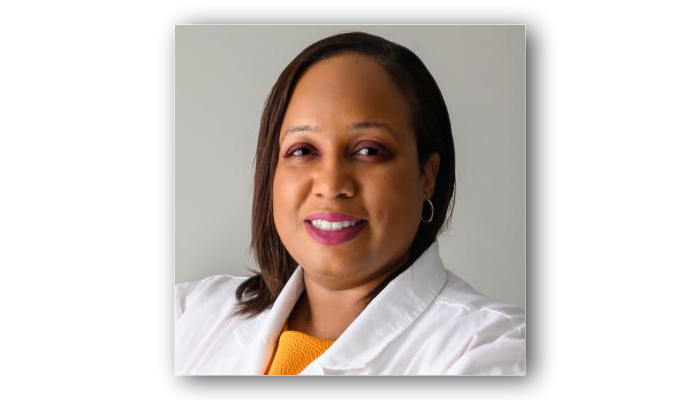Understanding the Braden Scale: Focus on Sensory Perception (Part 1)
January 7, 2021
 Editor's note: This blog by Holly M. Hovan, MSN, GERO-BC, APRN, CWOCN-AP, is the recipient of the 2021 Blog of the Year Award. It has received the most views of any blog posted on WoundSource within the last year. The WoundSource Editors would like to congratulate Holly on her award.
Editor's note: This blog by Holly M. Hovan, MSN, GERO-BC, APRN, CWOCN-AP, is the recipient of the 2021 Blog of the Year Award. It has received the most views of any blog posted on WoundSource within the last year. The WoundSource Editors would like to congratulate Holly on her award.
Editor's Note: This blog was originally written and published in September of 2017. It was updated and republished in January of 2021.
Introduction
As wound care professionals, the Braden Scale for Predicting Pressure Sore Risk® is near and dear to our hearts. With that in mind, our evidence-based tool needs to be used correctly to yield accurate results. Working with long-term care and geriatric populations opens up a world of multiple pre-existing comorbidities and risk factors that aren’t always explicitly written into the Braden Scale categories. Additionally, the frequency of Braden Scale use may contribute to a multitude of different scores. The resident behaves differently on different shifts, for example, being asleep on the night shift but up and about on days. What is the correct way to score these patients? I believe that a less frequent Braden Scale assessment yields more accurate results. However, we should still complete a Braden Scale on admission, during transfer, when receiving, and most importantly, with any change in condition.
What is the Braden Scale?
Briefly put, the Braden Scale is an evidenced-based tool, developed by Nancy Braden and Barbara Bergstrom, that predicts the risk for developing a hospital- or facility-acquired pressure ulcer or injury. The Braden Scale uses a scores from less than or equal to 9 to as high as 23. The lower the number, the higher the risk is for developing an acquired ulcer or injury.
19-23 = no risk
15-18 = mild risk
13-14 = moderate risk
less than 9 = severe risk
There are six categories within the Braden Scale: sensory perception, moisture, activity, mobility, nutrition, and friction or shear.
In this blog, I address sensory perception as defined by the Braden Scale and how this is applicable to residents of a long-term care facility.
Braden Scale Scoring for Sensory Perception
In the Braden Scale, sensory perception is the ability to respond meaningfully to pressure-related discomfort. The resident is scored on a scale of 1 to 4, as follows:
1 = completely limited
2 = very limited
3 = slightly limited
4 = no impairment
Please review the Braden Scale card for a deeper definition of each of these terms. With regard to sensory perception, I want to stress the importance of assessing neuropathy in residents with diabetes, recognizing paralysis or loss of sensation in residents with spinal cord injury (SCI), and understanding how sensory perception may vary in residents with dementia.
These three populations are often seen in long-term care facilities, so it’s important to understand their unique situations. Most people recognize SCI as a loss of sensory perception, but diabetic neuropathy is sometimes missed. A simple monofilament test may be used to check for sensation or neuropathy in residents with diabetes. In addition, vascular status should be assessed, including pulses on the lower extremities and capillary refill.
After assessing for neuropathy and possibly for vascular issues, the definitions of the Braden Scale for each of the subcategories (1–4) should be read and understood, and an appropriate number should be assigned to the subcategory. A resident with paraplegia who is experiencing loss of sensation to the lower half of the body would automatically score only a 2 because of loss of sensation over half of the body. A resident with diabetes with some neuropathy in the feet would automatically score a 3 if they cannot feel pain or discomfort in one or more of their extremities. Monofilament testing is a fairly inexpensive, accurate test that is used to assess for loss of protective sensation or sensory impairment. A trained professional can usually complete the test fairly quickly and can document or report a positive or negative test result, indicating the presence or absence of peripheral neuropathy.
The subcategory “no impairment” is very rarely accurate with the long-term care population. These residents are in the hospital, scooting up in bed, spending more time in bed, possibly wheelchair bound, with multiple pre-existing comorbidities and usually one or more deficits. It is possible to score a 4 here, but again, it is rare.
The takeaway point here for sensory perception is to assess for neuropathy, SCI, and dementia. These residents may often be deficient in this specific category. It is important to understand the category and definitions to score the resident accurately. Education with nursing staff is pertinent here, and pocket cards are always helpful. Yearly competencies for long-term care staff on Braden Scale education are also helpful, along with orientation for new nurses, to be sure that the information is understood. Education by a certified wound, ostomy, and continence nurse, continued support, and follow-up are needed to ensure accurate Braden Scale scores within any facility.
Up next: The Braden Scale category Moisture.
Note: For anyone who wishes to utilize the Braden Scale in their health care facility, you must request permission to do so. Please visit www.bradenscale.com and complete the Permission Request form.
About the Author
Holly is a board certified gerontological nurse and advanced practice wound, ostomy, and continence nurse coordinator at The Department of Veterans Affairs Medical Center in Cleveland, Ohio. She has a passion for education, teaching, and our veterans. Holly has been practicing in WOC nursing for approximately six years. She has much experience with the long-term care population and chronic wounds as well as pressure injuries, diabetic ulcers, venous and arterial wounds, surgical wounds, radiation dermatitis, and wounds requiring advanced wound therapy for healing. Holly enjoys teaching new nurses about wound care and, most importantly, pressure injury prevention. She enjoys working with each patient to come up with an individualized plan of care based on their needs and overall medical situation. She values the importance of taking an interprofessional approach with wound care and prevention overall, and involves each member of the health care team as much as possible. She also values the significance of the support of leadership within her facility and the overall impact of great teamwork for positive outcomes.
The views and opinions expressed in this blog are solely those of the author, and do not represent the views of WoundSource, HMP Global, its affiliates, or subsidiary companies.











